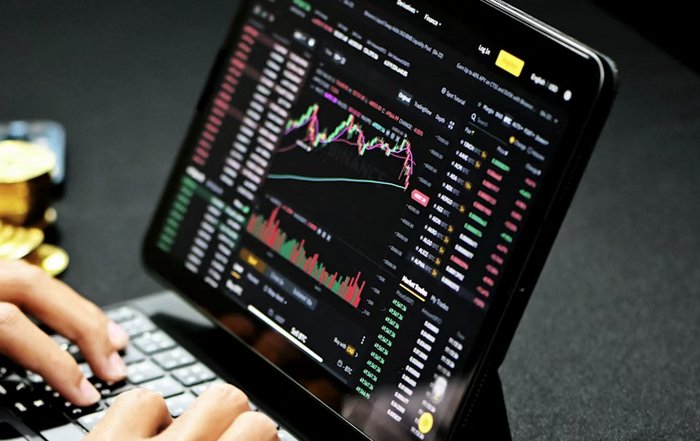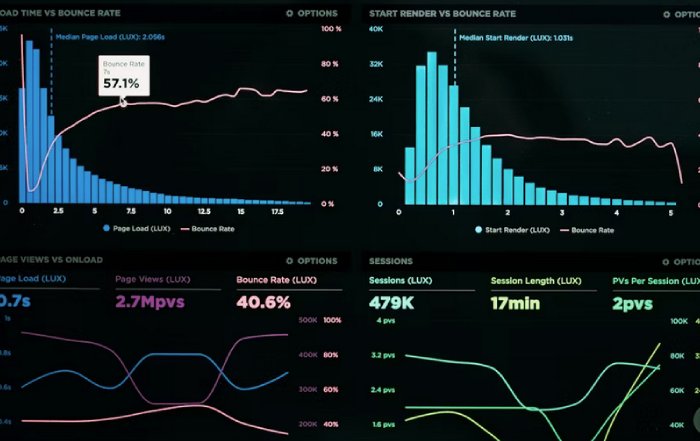How Stock Markets Are Adapting to High-Speed Technology in 2025
Stock markets in 2025 stand at a decisive inflection point where microsecond trading, artificial intelligence-driven analytics, and cloud-native market infrastructure are reshaping how capital is formed, priced, and allocated across the global economy, and for the readers of BizFactsDaily.com, this transition is not an abstract technological shift but a direct driver of opportunity, risk, and strategic repositioning in every major asset class and every major financial center.
From Open Outcry to Microseconds: The New Market Baseline
The journey from human-driven trading floors to fully electronic limit order books is well documented, yet the last five years have seen a dramatic acceleration in market microstructure innovation, as exchanges in the United States, Europe, and Asia have invested heavily in ultra-low-latency infrastructure, co-location services, and high-performance matching engines that can process millions of messages per second, transforming the way liquidity is discovered and executed across equities, derivatives, exchange-traded funds, and even digital assets.
The leading venues such as New York Stock Exchange (NYSE), Nasdaq, London Stock Exchange Group (LSEG), Deutsche Börse, and Singapore Exchange (SGX) now operate in an environment where trading strategies are optimized not only for price and volume but for nanosecond-level timing, and where the physical distance between trading servers and exchange data centers can translate directly into measurable performance differences; readers can explore how this evolution has shaped modern electronic trading by reviewing the historical and structural analysis available from Nasdaq's market structure resources.
This shift has forced institutional investors, proprietary trading firms, and even sophisticated retail brokers to invest in technology stacks once reserved for telecom carriers and supercomputing labs, while regulators from the U.S. Securities and Exchange Commission (SEC) and the European Securities and Markets Authority (ESMA) to the Monetary Authority of Singapore (MAS) are continuously updating rules to oversee a market that now operates at machine speed, as can be seen in the SEC's ongoing work on equity market structure modernization described on the SEC's official market structure page.
For BizFactsDaily.com, which closely follows developments in stock markets and global capital flows, the key narrative is that speed alone is no longer a differentiator; rather, it is how speed is integrated with data, algorithms, governance, and risk controls that defines the competitive advantage of market participants from New York and London to Frankfurt, Singapore, and Tokyo.
High-Speed Trading and the Rise of Algorithmic Market Makers
Algorithmic and high-frequency trading (HFT) have evolved from niche practices to core pillars of liquidity provision in major markets, as firms deploy sophisticated strategies that rely on predictive models, low-latency connectivity, and continuous optimization of order placement across multiple venues and asset classes, a trend that has been examined in depth by the Bank for International Settlements (BIS) in its studies on fast markets and algorithmic trading.
In the United States and Europe, a significant share of equity and foreign exchange volume is now executed by high-speed market makers that quote prices in fractions of a second and update their positions in response to order book dynamics, news feeds, and cross-asset signals, while in Asia-Pacific, exchanges in Japan, Singapore, and South Korea have actively courted such participants to deepen liquidity and attract global order flow, which can be seen in initiatives described in SGX's market statistics and connectivity information.
This rise of algorithmic market makers has altered the business models of traditional broker-dealers and banks, pushing them toward more technology-centric roles and leading them to invest heavily in electronic execution platforms and smart order routing, a transformation that is closely linked to the broader digitalization of banking and capital markets.
For the audience of BizFactsDaily.com, which tracks innovation and investment trends, the crucial point is that high-speed trading is no longer just about speculative strategies; it is embedded in the very plumbing of modern markets, influencing transaction costs, market depth, and price discovery in ways that affect pension funds in Canada, sovereign wealth funds in the Middle East, family offices in Europe, and retail investors in the United States and Asia alike, as highlighted by research from the OECD on institutional investors and market liquidity.
Artificial Intelligence as the New Market Nerve System
If speed defines the hardware layer of modern stock markets, artificial intelligence defines the software layer, since machine learning models now sit at the center of portfolio construction, trade execution, market surveillance, and even macroeconomic forecasting, allowing firms to process unstructured data from corporate filings, news, social media, and alternative data sources at scale.
Leading asset managers and hedge funds across the United States, United Kingdom, Germany, and Asia-Pacific increasingly deploy natural language processing to analyze earnings calls and regulatory disclosures, computer vision to interpret satellite imagery and logistics data, and reinforcement learning to optimize execution algorithms, a trend that aligns with broader developments in artificial intelligence documented by organizations such as McKinsey & Company, which examines AI's impact on financial services in its AI in banking and markets insights.
Exchanges and regulators are also adopting AI for market monitoring and compliance, using anomaly detection models to identify potential market abuse, spoofing, or layering activities across equities, derivatives, and crypto markets, as discussed in regulatory technology analyses from the Financial Stability Board (FSB), which provides global perspectives on FinTech and market resilience.
For BizFactsDaily.com, which covers technology and business transformation, the intersection of AI and capital markets is particularly significant because it raises the bar for expertise and governance; firms must not only build or procure advanced models but also ensure explainability, robust data governance, and alignment with emerging AI regulatory frameworks in the European Union, United States, and Asia, such as those described by the European Commission in its evolving AI regulatory initiatives.
Cloud, Edge, and the Re-Architecture of Market Infrastructure
High-speed technology is not confined to trading algorithms; it extends to the entire infrastructure stack that supports global capital markets, as exchanges and major banks increasingly migrate matching engines, risk systems, and data analytics platforms to cloud and hybrid environments, often in collaboration with hyperscale providers such as Amazon Web Services (AWS), Microsoft Azure, and Google Cloud.
In 2025, several leading exchanges in North America, Europe, and Asia are either operating or piloting cloud-based secondary markets and data distribution platforms, which promise greater scalability, geographic redundancy, and cost efficiency, while also enabling new data products and analytics services; the World Federation of Exchanges (WFE) has explored these developments in its reports on market infrastructure and technology trends.
At the same time, latency-sensitive components such as matching engines and risk checks are often deployed in edge data centers or specialized co-location facilities to maintain ultra-low-latency performance, creating a layered architecture where the most time-critical processes are kept as close as possible to the exchange core, while less latency-sensitive analytics and historical data processing are moved to the cloud.
For the readers of BizFactsDaily.com, particularly those following economy and news trends, this infrastructure transformation matters because it reshapes competitive dynamics among exchanges, reduces barriers to entry for new electronic trading venues in markets like Brazil, South Africa, and Southeast Asia, and opens the door for more data-driven products aimed at both institutional and sophisticated retail clients, as highlighted in industry analyses from Deloitte on capital markets modernization.
Digital Assets and the Convergence of Crypto and Traditional Markets
High-speed technology has been a defining feature of crypto markets since their inception, and in 2025, the convergence between digital asset trading and traditional stock markets is accelerating, with regulated exchanges in the United States, Europe, and Asia launching or expanding platforms for tokenized securities, spot bitcoin and ether exchange-traded products, and blockchain-based settlement solutions.
Regulatory clarity has improved in several jurisdictions, with the U.S. Securities and Exchange Commission, UK Financial Conduct Authority (FCA), European Securities and Markets Authority, and regulators in Singapore, Japan, and Switzerland providing more explicit frameworks for digital asset trading, custody, and disclosure, allowing institutional investors to increase their participation in crypto-linked products; insights into these evolving frameworks can be found through the IMF's work on digital money and crypto assets.
For BizFactsDaily.com, which has long covered crypto and its integration into mainstream finance, the key narrative is that high-speed technology is enabling cross-market strategies where traders arbitrage price discrepancies between tokenized assets and their underlying securities, or between crypto exchanges operating in different regulatory regimes, further blurring the lines between what used to be separate ecosystems.
This convergence is also driving experimentation with distributed ledger technology (DLT) for post-trade processes, as institutions explore blockchain-based solutions for clearing and settlement that could, in time, reduce counterparty risk and settlement times, an area the Bank of England and other central banks have explored in their research on DLT in financial market infrastructures.
Market Access, Retail Participation, and the Democratization Question
The rise of commission-free trading platforms, fractional shares, and mobile-first brokerage apps has significantly expanded market access for retail investors across the United States, United Kingdom, Europe, and Asia-Pacific, and high-speed technology sits behind these platforms, enabling real-time quotes, rapid order execution, and sophisticated risk management at scale.
While the most latency-sensitive strategies remain the domain of professional traders, retail investors increasingly benefit from improvements in execution quality, narrower spreads, and richer market data, although concerns remain about payment for order flow, gamification, and investor protection, issues that have been examined by regulators and policy institutes such as the Brookings Institution, which discusses retail trading and market structure.
For the audience of BizFactsDaily.com, which follows marketing trends as well as financial innovation, the democratization of access raises important questions about financial literacy, responsible product design, and the role of social media in shaping investment behavior, particularly in markets like the United States, Canada, the United Kingdom, Germany, and Australia where retail participation in stock and options trading has grown substantially since 2020.
At the same time, emerging markets in Asia, Africa, and South America are seeing the rise of local trading platforms and neobrokers that leverage cloud infrastructure and open banking APIs to provide low-cost access to equities and ETFs listed in major financial centers, a development documented in reports by the World Bank on financial inclusion and digital finance.
Employment, Skills, and the Human Side of High-Speed Markets
Behind every microsecond trade and AI-driven model lies a deep transformation in the skills and employment landscape of global capital markets, as banks, exchanges, and trading firms increasingly seek professionals who combine quantitative finance expertise with software engineering, data science, and cybersecurity capabilities.
Roles in algorithmic trading, quantitative research, market infrastructure engineering, and regulatory technology have grown in importance, while some traditional middle-office and back-office functions have been automated or reshaped, reflecting broader trends in employment and digital transformation across industries; this shift is analyzed in labor market studies by the OECD on the future of work and skills.
For BizFactsDaily.com, which profiles founders and innovators building the next generation of financial technology platforms, this evolution underscores the importance of interdisciplinary teams that can bridge trading strategy, regulatory compliance, and advanced technology, whether in established hubs such as New York, London, Frankfurt, Zurich, Singapore, Hong Kong, and Tokyo, or in emerging centers like Berlin, Amsterdam, Toronto, Sydney, and São Paulo.
Educational institutions and professional bodies across the United States, Europe, and Asia are responding by expanding programs in quantitative finance, financial engineering, and data science, while regulators and industry associations emphasize continuous professional development in areas such as algorithmic trading controls, AI ethics, and cybersecurity, topics that feature prominently in resources from the CFA Institute on capital markets and professional standards.
Regulation, Risk, and the Search for Market Resilience
As stock markets become faster and more complex, regulators and policymakers must balance innovation with stability, ensuring that high-speed technology does not amplify systemic risk, market manipulation, or unfair access, especially in periods of stress when liquidity can evaporate quickly.
Post-crisis reforms and subsequent updates have introduced circuit breakers, volatility auctions, minimum resting times, and enhanced reporting requirements for algorithmic trading, while global bodies such as the Financial Stability Board, IOSCO, and the BIS continue to coordinate cross-border approaches to market resilience; readers can explore these global policy efforts through IOSCO's work on secondary and other markets.
For BizFactsDaily.com, which examines sustainable and responsible finance, the regulatory agenda now extends beyond pure market mechanics to encompass climate-related risks, ESG disclosures, and the integration of sustainability factors into trading and investment strategies, as highlighted in frameworks from the Task Force on Climate-related Financial Disclosures (TCFD) and the International Sustainability Standards Board (ISSB), whose standards and guidance are available through the IFRS sustainability portal.
Cybersecurity has also risen to the top of the risk agenda, as exchanges, clearing houses, and major trading firms in the United States, Europe, and Asia face increasingly sophisticated threats that could disrupt trading, compromise data, or undermine investor confidence; the U.S. Department of Homeland Security and other national cybersecurity agencies provide guidance on protecting critical financial infrastructure.
Sustainability, Data, and the Next Frontier of Market Intelligence
High-speed technology is not only about trading faster; it is also about processing and integrating vast volumes of data into actionable market intelligence, and in 2025, one of the most important data domains is sustainability, as investors across North America, Europe, and Asia increasingly demand rigorous, comparable information on environmental, social, and governance performance.
Stock exchanges in the United States, United Kingdom, Germany, France, the Netherlands, Sweden, Singapore, Japan, and other markets are enhancing ESG disclosure requirements, sustainability indices, and green bond segments, while data providers and AI platforms develop sophisticated models to assess climate risk, supply chain resilience, and social impact; the UN-supported Principles for Responsible Investment (PRI) offers extensive resources on ESG integration in equity markets.
For the audience of BizFactsDaily.com, which follows both investment and sustainability trends, the intersection of high-speed technology and ESG data represents a powerful opportunity to build portfolios that are not only optimized for risk and return but also aligned with long-term societal and environmental objectives, a direction reinforced by policy initiatives in the European Union's sustainable finance agenda and climate-related risk guidance from central banks and supervisors gathered under the Network for Greening the Financial System (NGFS), whose reports are available on the NGFS website.
As real-time and near-real-time sustainability data becomes more widely available, high-speed trading strategies may increasingly incorporate climate-related news, regulatory developments, and physical risk indicators into their models, potentially influencing capital allocation across sectors such as renewable energy, electric vehicles, green infrastructure, and transition technologies.
Strategic Implications for Global Investors and Businesses
For business leaders, founders, and investors who rely on BizFactsDaily.com to navigate global markets, the adaptation of stock markets to high-speed technology in 2025 carries several strategic implications that cut across geographies from North America and Europe to Asia-Pacific, Africa, and South America.
First, market access and execution quality are now deeply tied to technology partnerships and infrastructure choices, meaning that selecting the right brokers, data providers, and connectivity solutions has become a core strategic decision, not a back-office detail, for asset managers, corporate treasurers, and family offices; insights into these choices can be complemented by following developments in technology and business strategy.
Second, the competitive edge increasingly lies in the integration of AI, advanced analytics, and domain expertise, rather than in raw speed alone, pushing organizations to invest in talent, governance, and data capabilities that can translate the noise of high-frequency markets into coherent, long-term investment and risk management decisions, a point reinforced by global consulting analyses such as PwC's work on capital markets 2030.
Third, the convergence of traditional and digital asset markets, combined with evolving regulatory frameworks, means that portfolio construction and risk management must now consider cross-market dynamics, from tokenized securities and crypto ETFs to blockchain-based settlement, especially in jurisdictions such as the United States, United Kingdom, European Union, Singapore, Switzerland, and Japan that are at the forefront of digital asset regulation.
Finally, the broader macroeconomic and geopolitical context-from inflation cycles and interest rate shifts to geopolitical tensions and supply chain realignments-interacts with high-speed market dynamics in complex ways, amplifying both opportunities and risks; understanding these interactions requires not only tracking real-time market data but also engaging with high-quality macroeconomic analysis from institutions like the International Monetary Fund, whose World Economic Outlook provides a global perspective on growth, inflation, and financial stability.
Looking Ahead: Building Trustworthy High-Speed Markets
As 2025 unfolds, stock markets across the United States, Europe, Asia, and other regions will continue to adapt to the relentless advance of high-speed technology, AI, and digital assets, and the central challenge for market operators, regulators, and participants is to ensure that these innovations enhance, rather than undermine, the core functions of capital markets: efficient price discovery, fair access, robust liquidity, and long-term capital formation.
For BizFactsDaily.com and its global audience, the path forward lies in cultivating a deep understanding of both the technological and institutional dimensions of this transformation, recognizing that expertise, authoritativeness, and trustworthiness are built not only on speed and data but also on transparency, governance, and a long-term commitment to market integrity.
In this environment, those who combine cutting-edge technology with disciplined risk management, rigorous analysis, and a clear strategic vision will be best positioned to navigate-and shape-the high-speed markets of the decade ahead, whether they operate from New York, London, Frankfurt, Zurich, Toronto, Singapore, Hong Kong, Tokyo, Sydney, São Paulo, Johannesburg, or emerging financial centers around the world.








